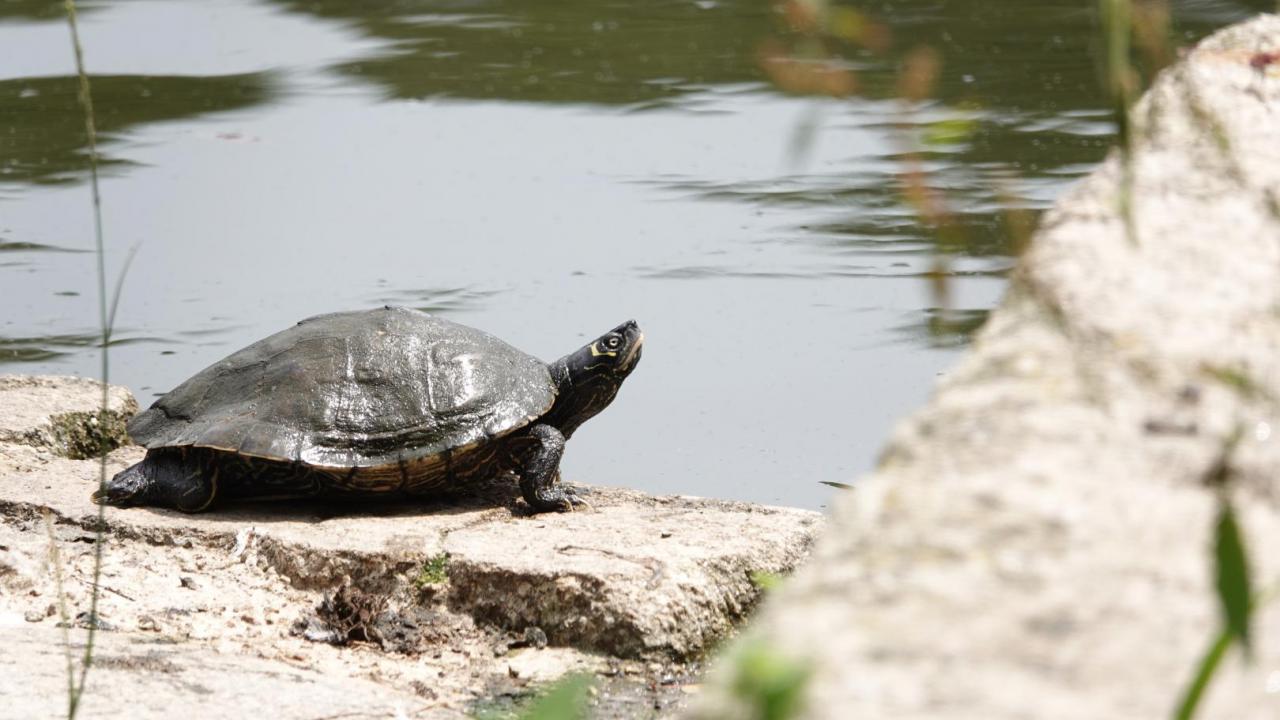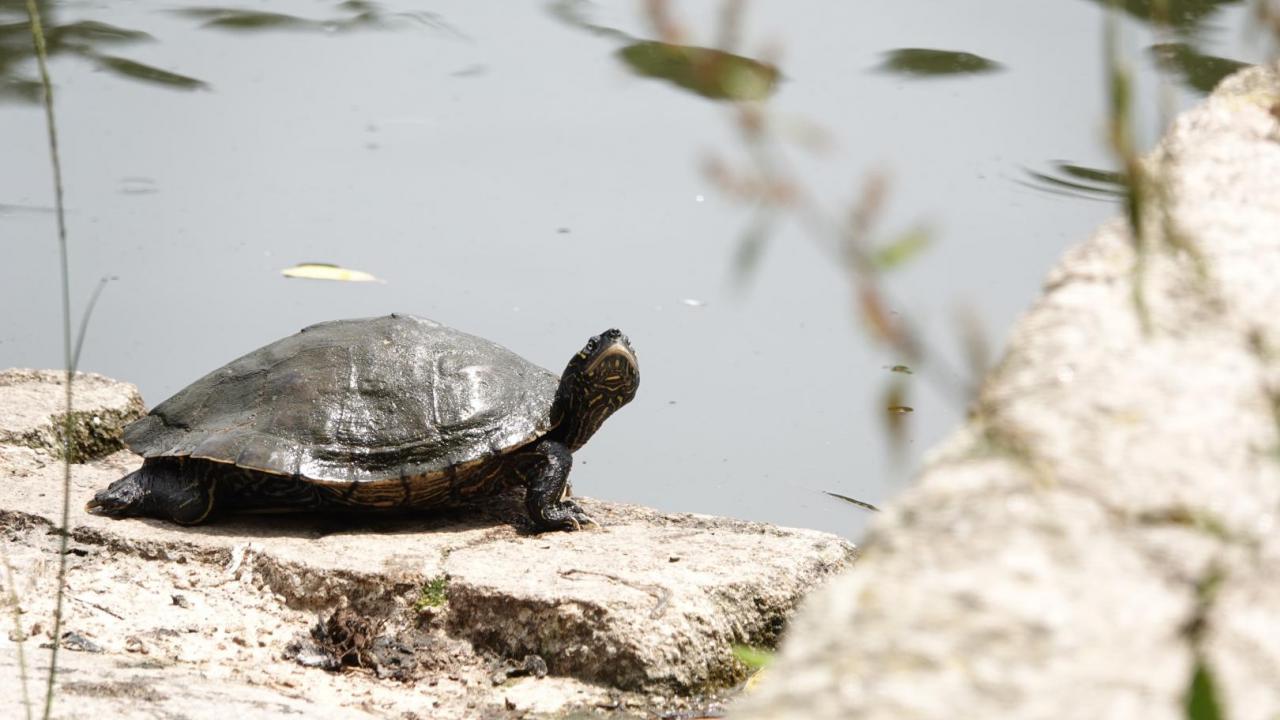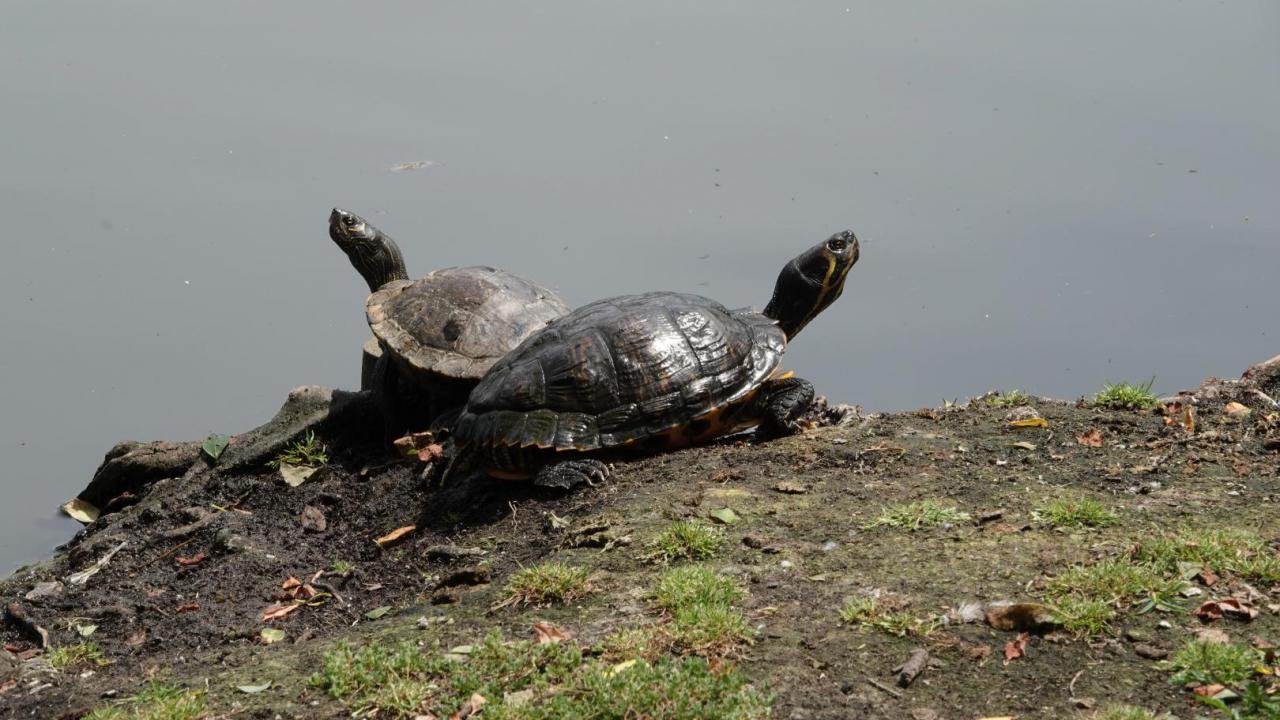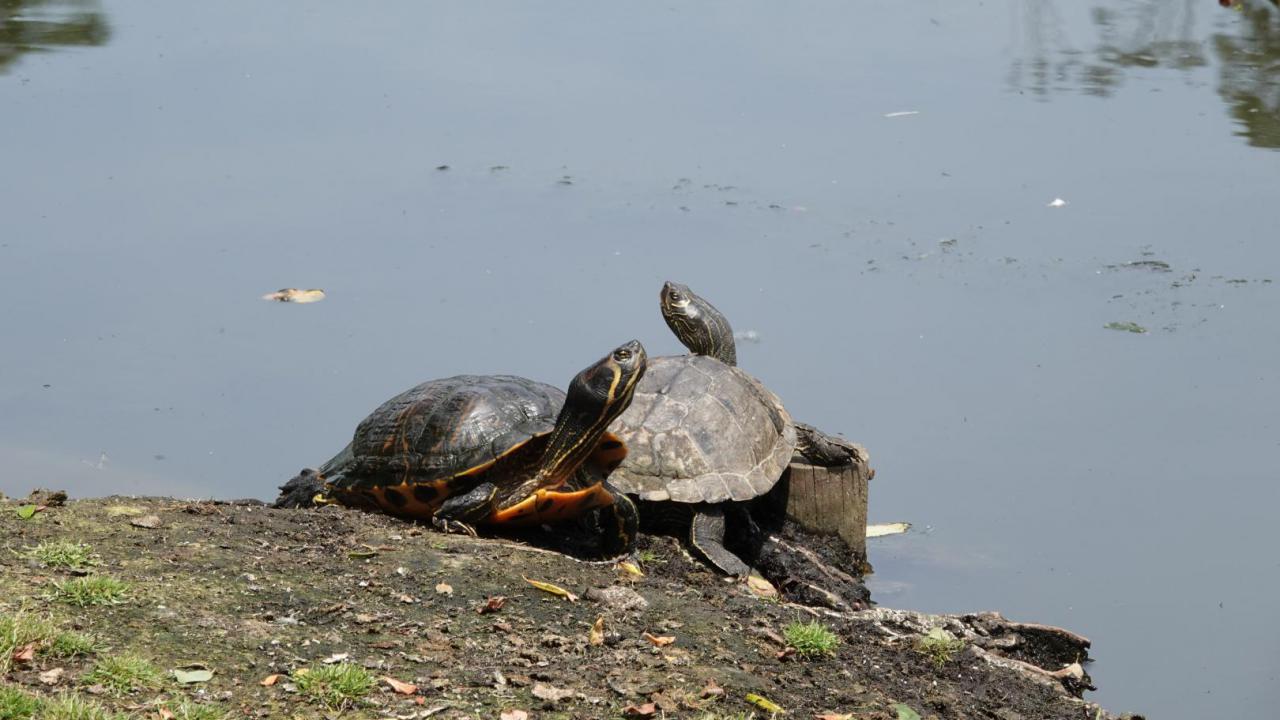Description:
The False Map Turtle (Graptemys pseudogeographica) is a species of turtle endemic to the United States but have spread all over the world through the pet trade.
This turtle gets its name from the light yellow lines that form a map like pattern on the back, but this pattern is usually obscure on adults.
There is a vertebral keel (a ridge that runs from the front to the back of the animal) on the back that is rather prominent even in adults.
The marginals on the rear of the carapace are serrated.
There are light yellow lines on the head and limbs.
A backwards L is present behind each eye.
There are no large blotches or spots found on the head, and three neck lines reach the eye.
This distinguishes false map turtles from all our other map turtles.
Females (up to 27 cm) grow much larger than the males (up to 15 cm).
Young turtles have brighter shells and markings, a dark pattern on the plastron, and a pronounced vertebral keel.
The 4th & 5th photo show a False Map Turtle in the company of a Yellow-bellied Slider (Trachemys scripta scripta).
Parque da Cidade do Porto, Porto, Portugal, 6 June 2023





